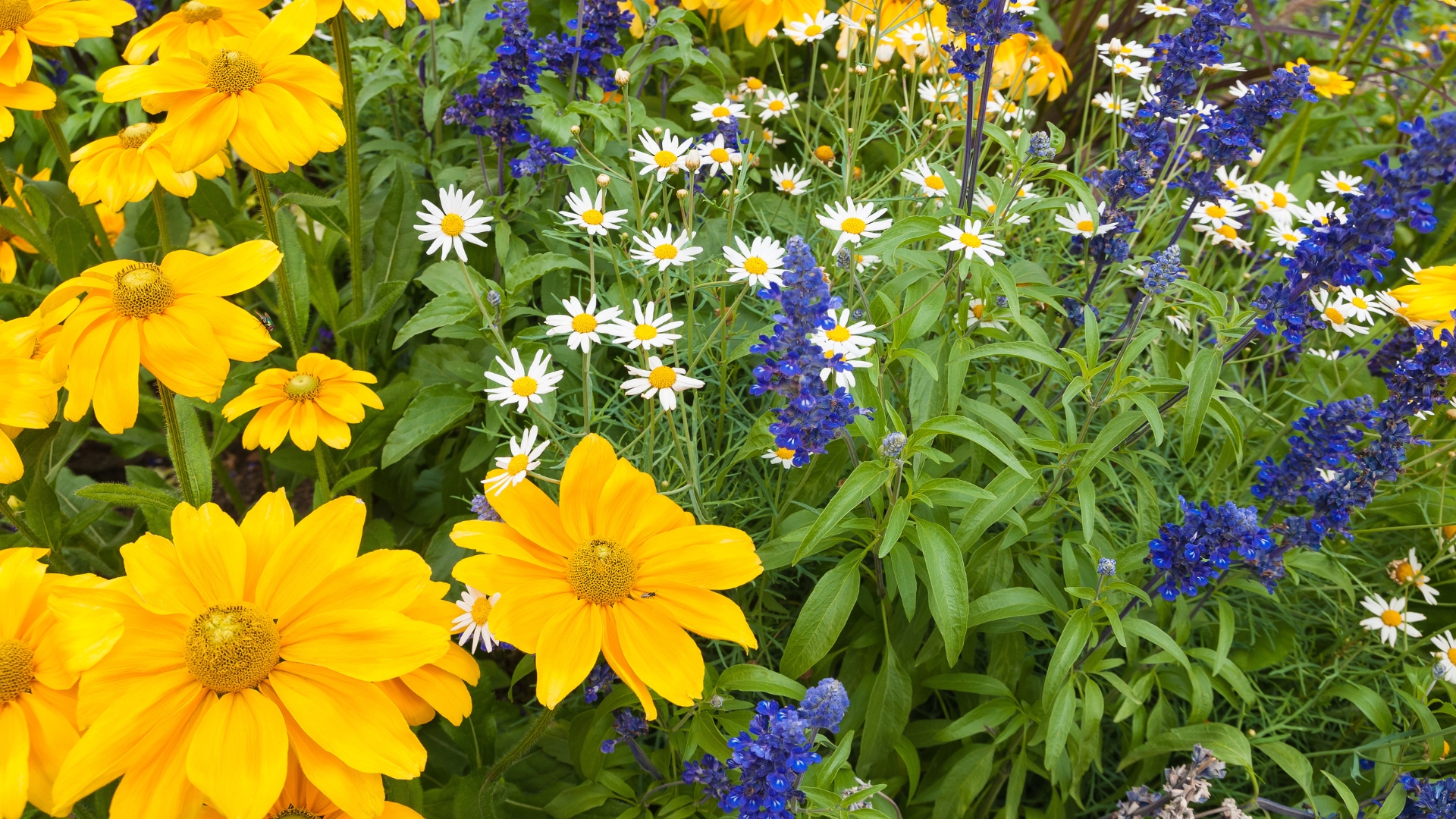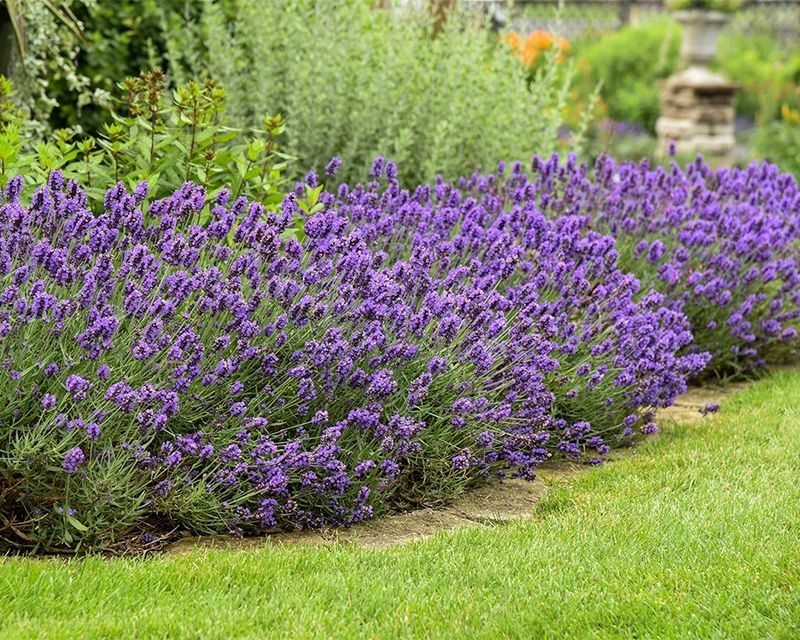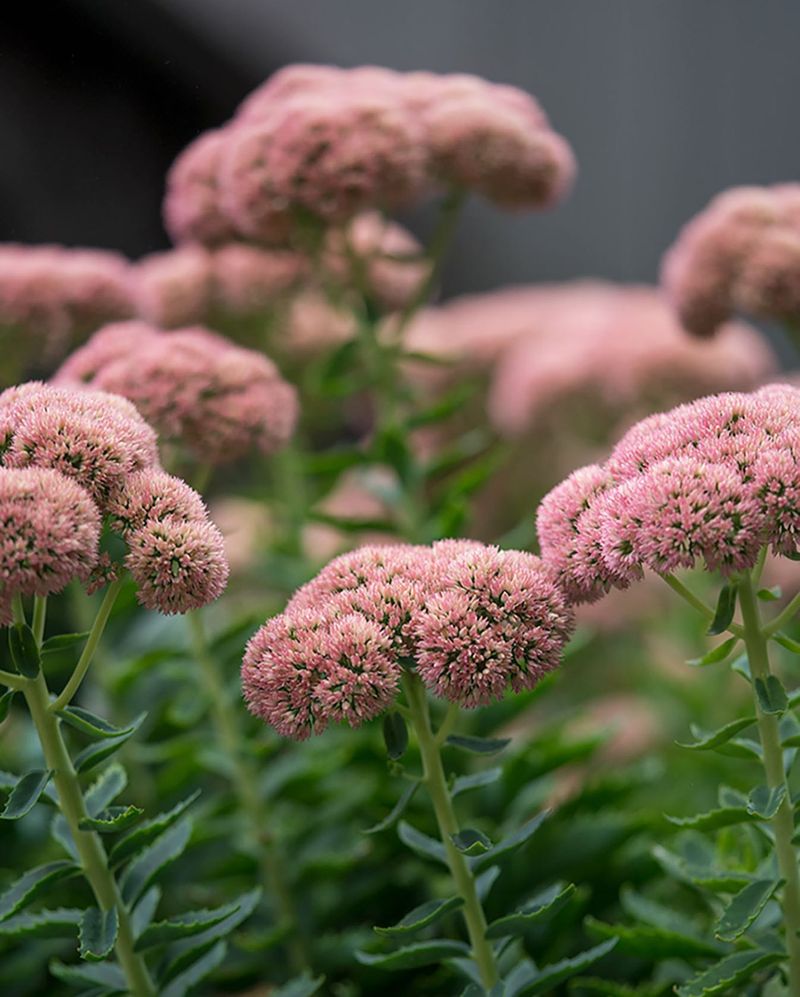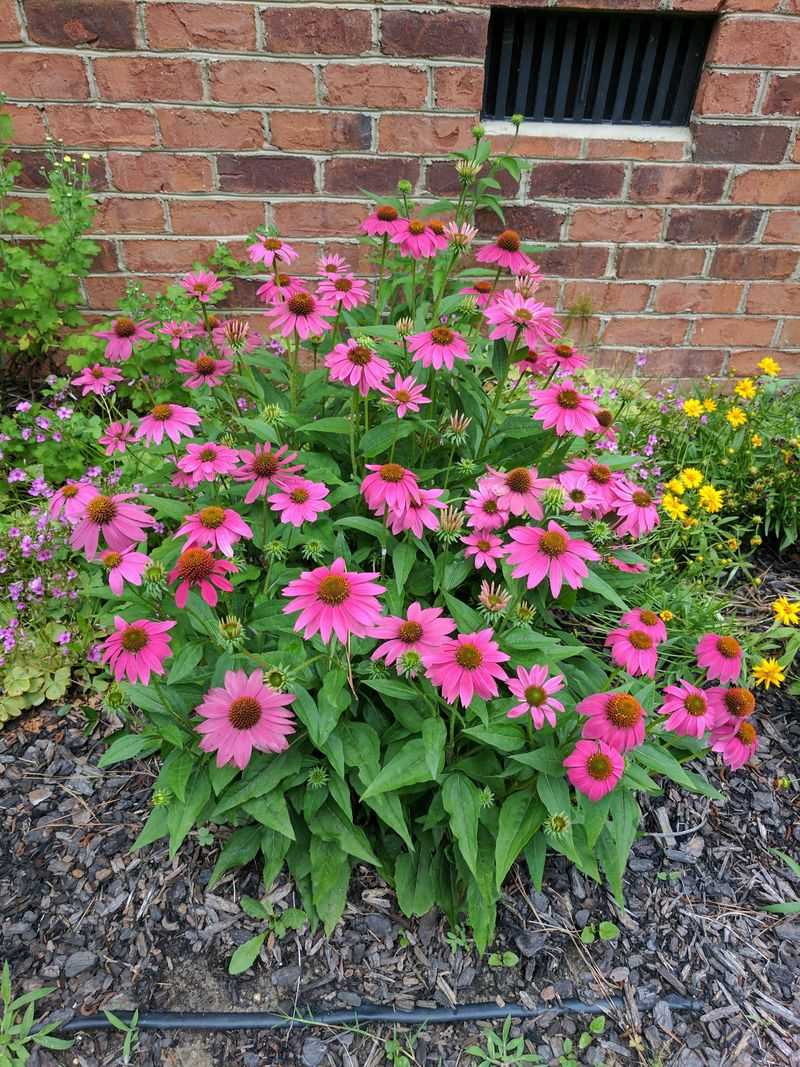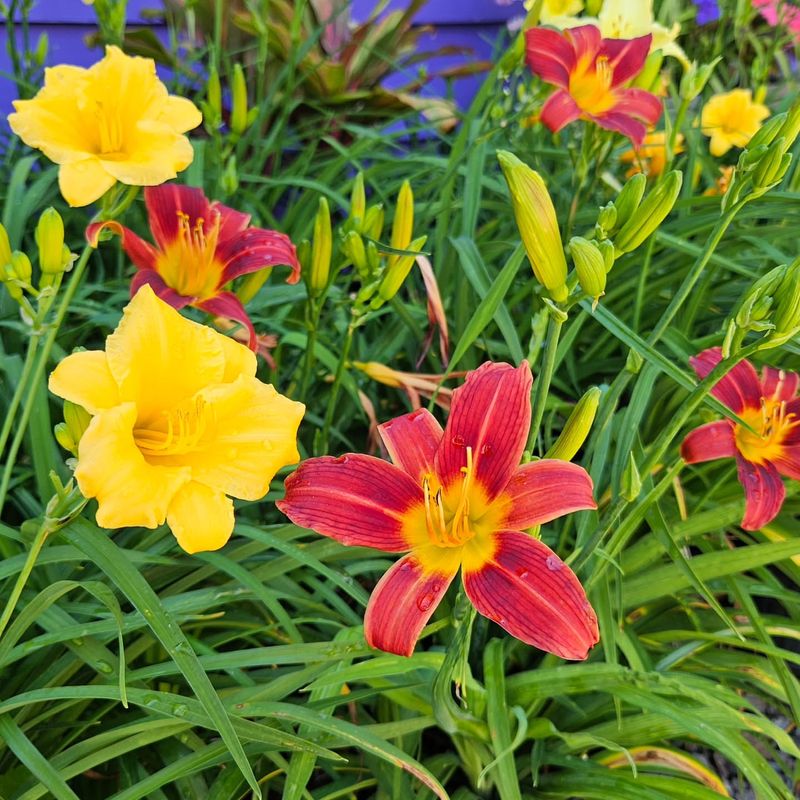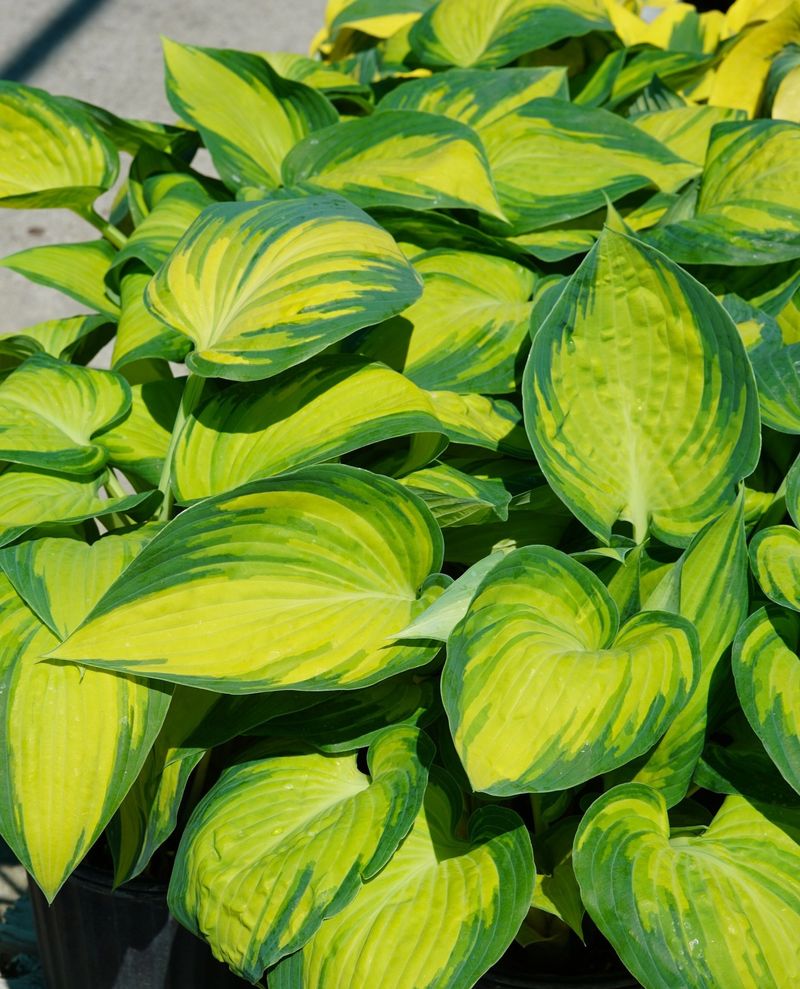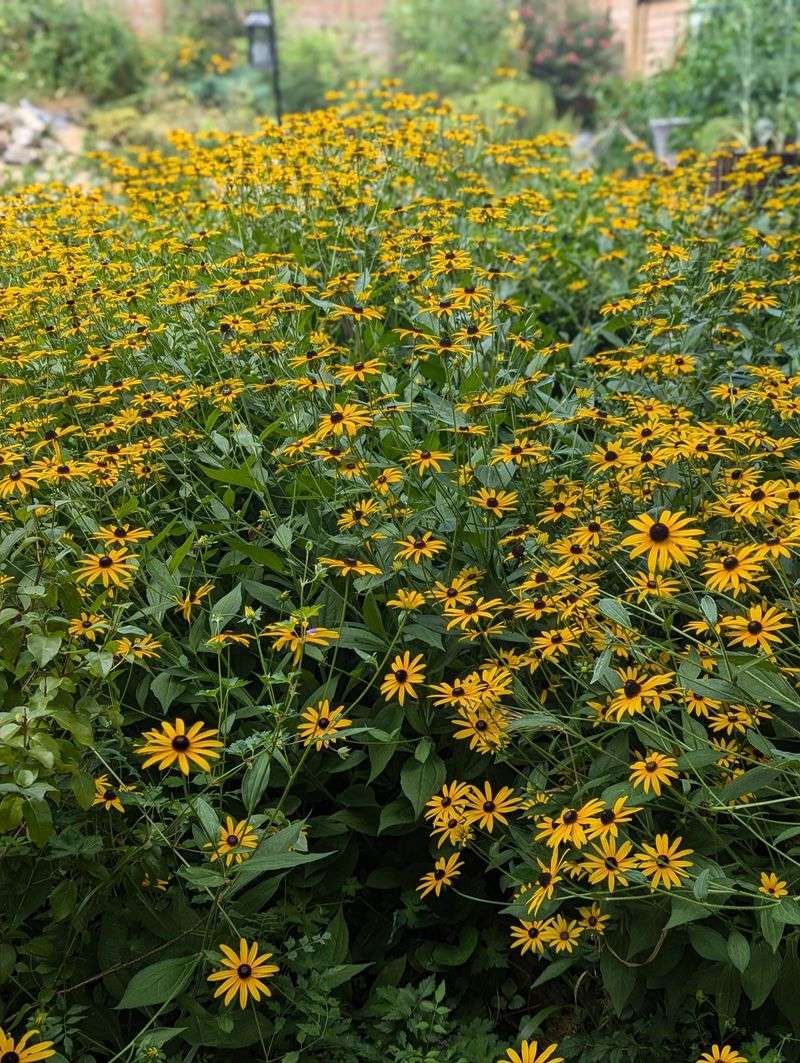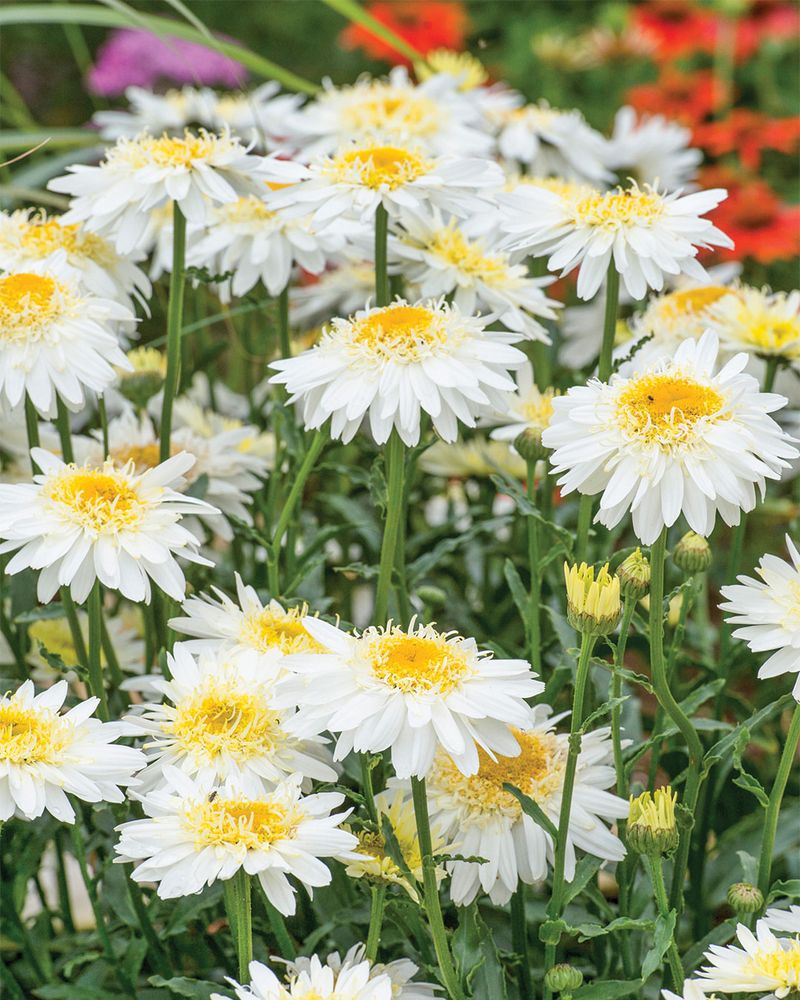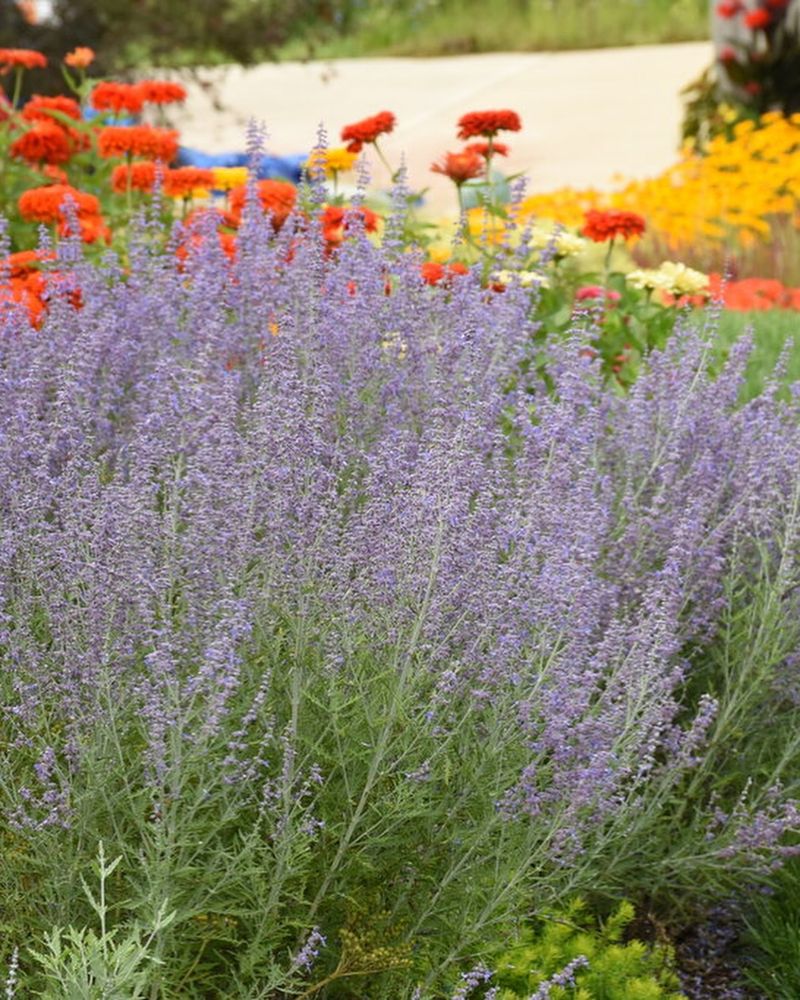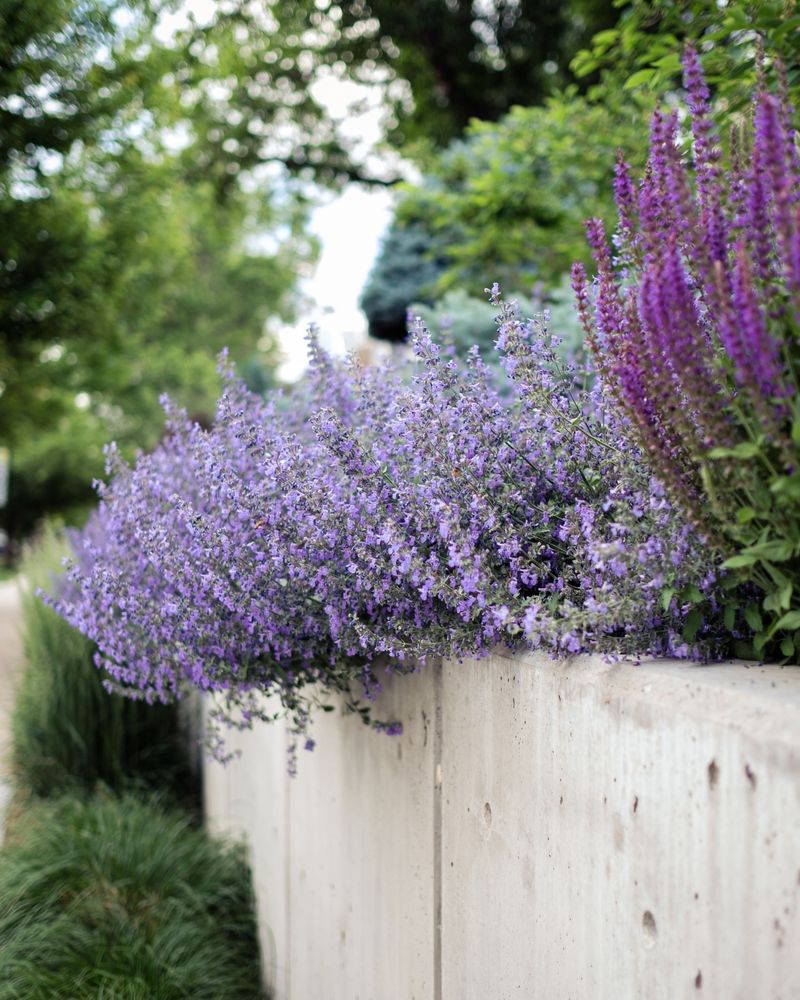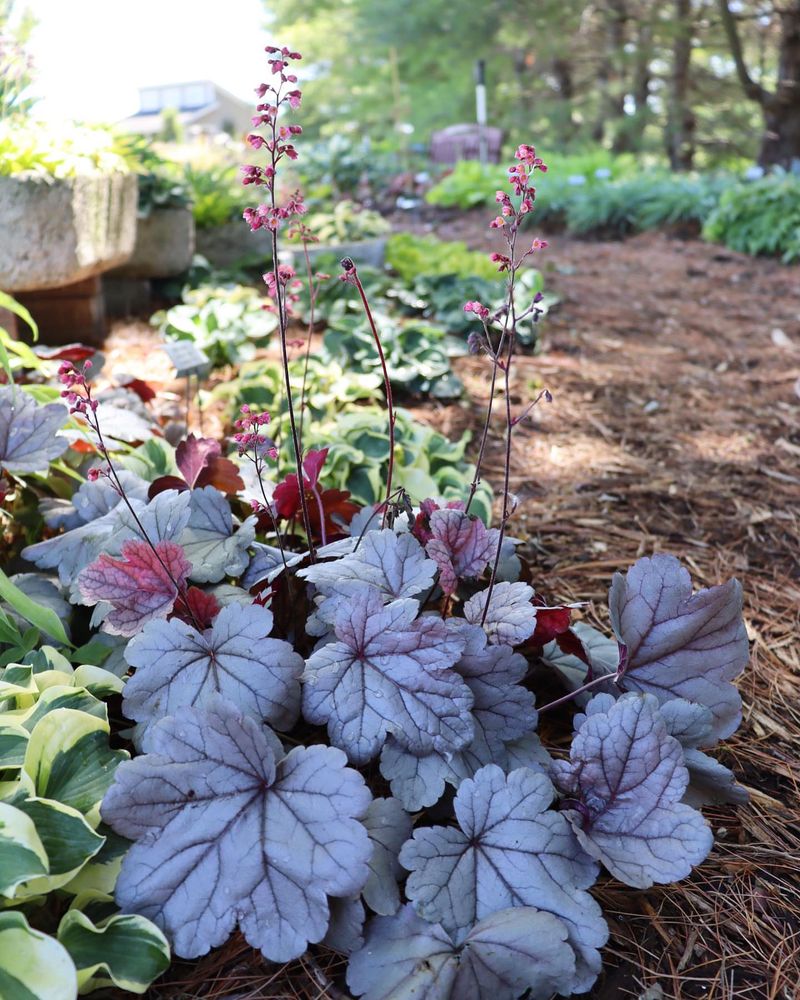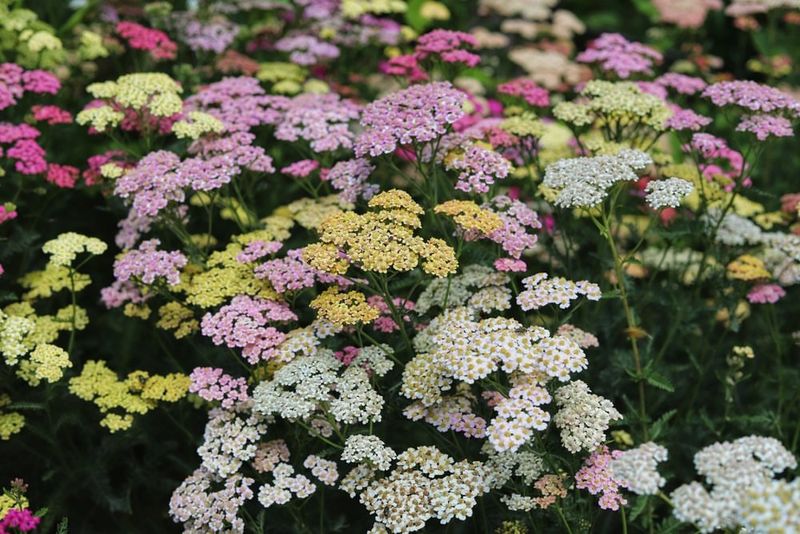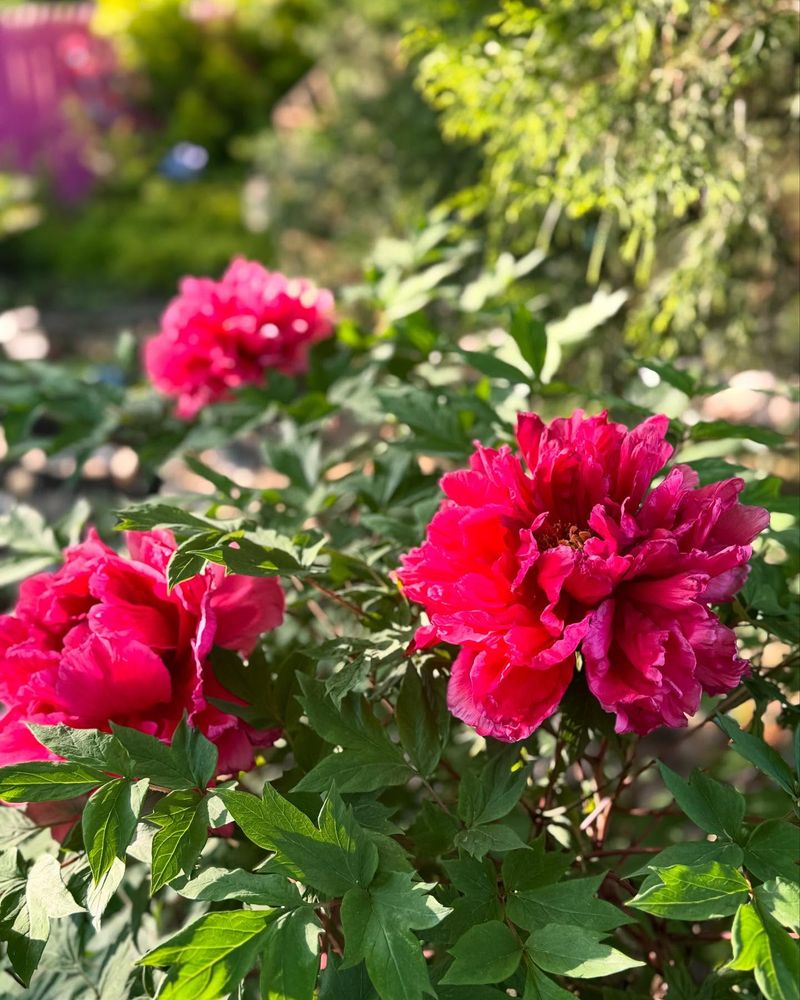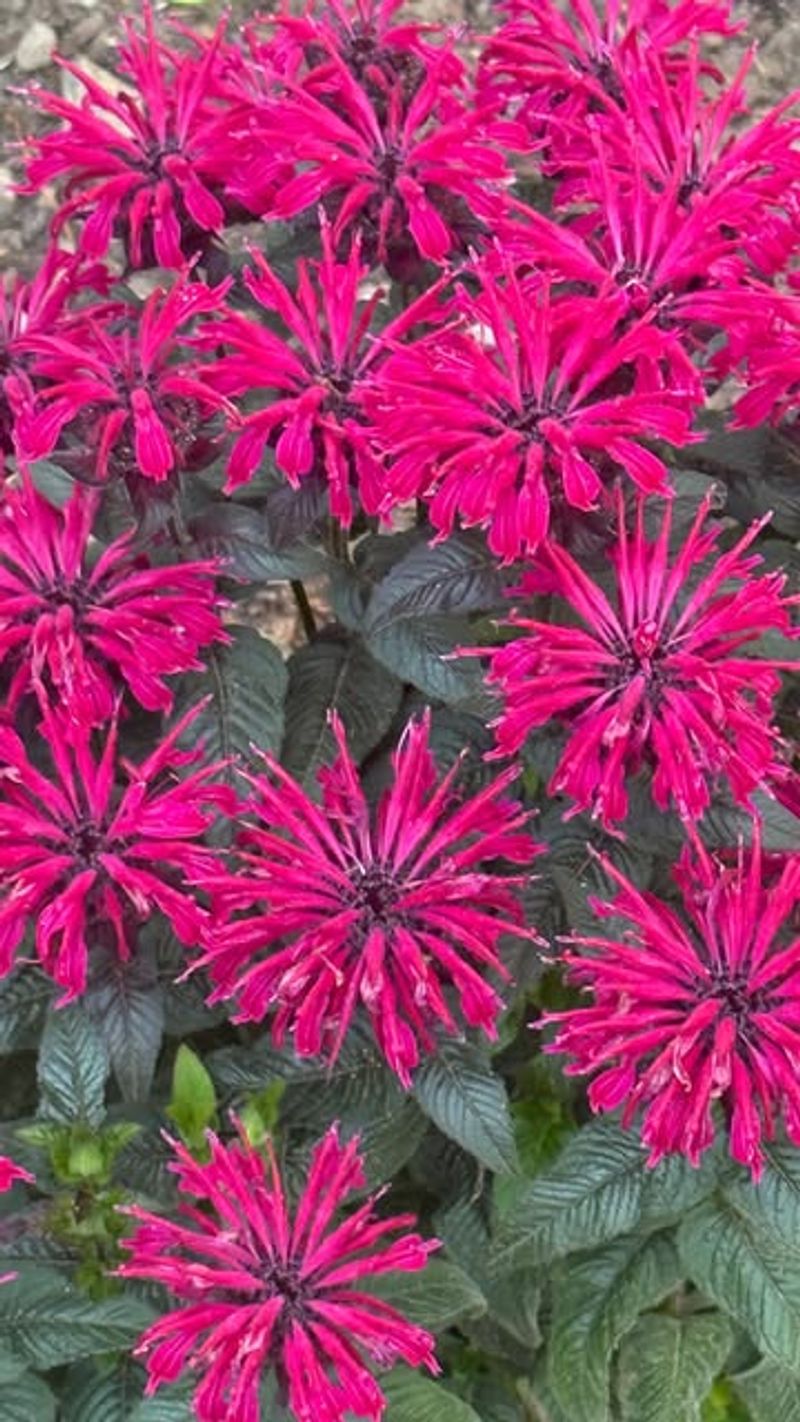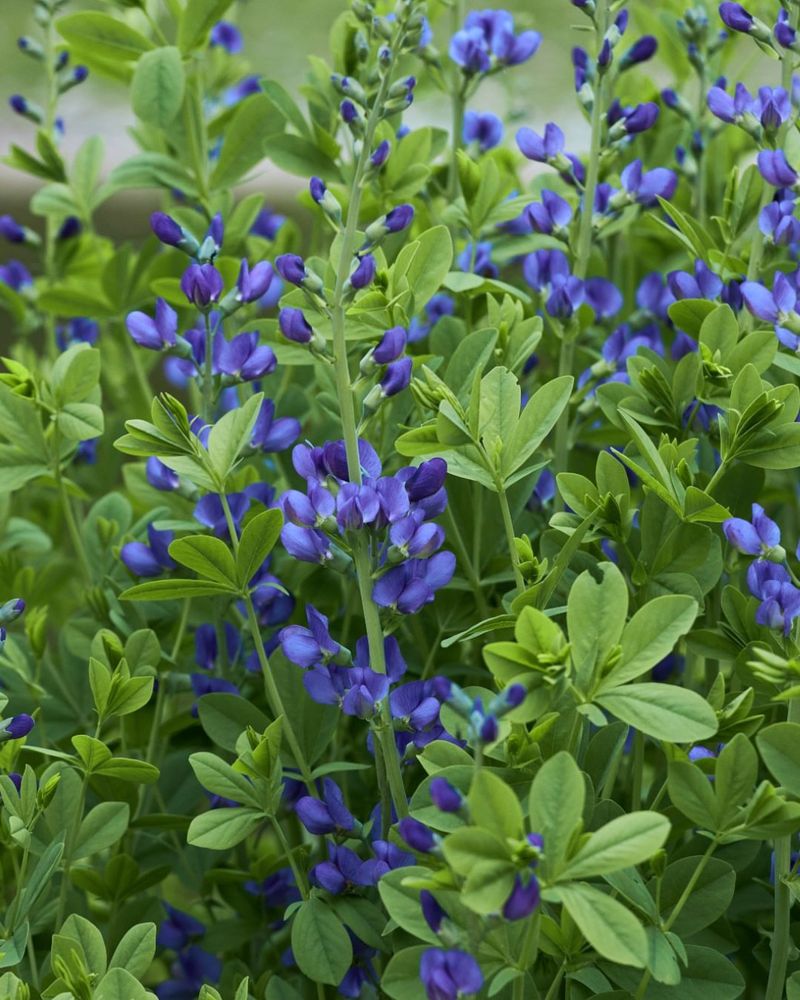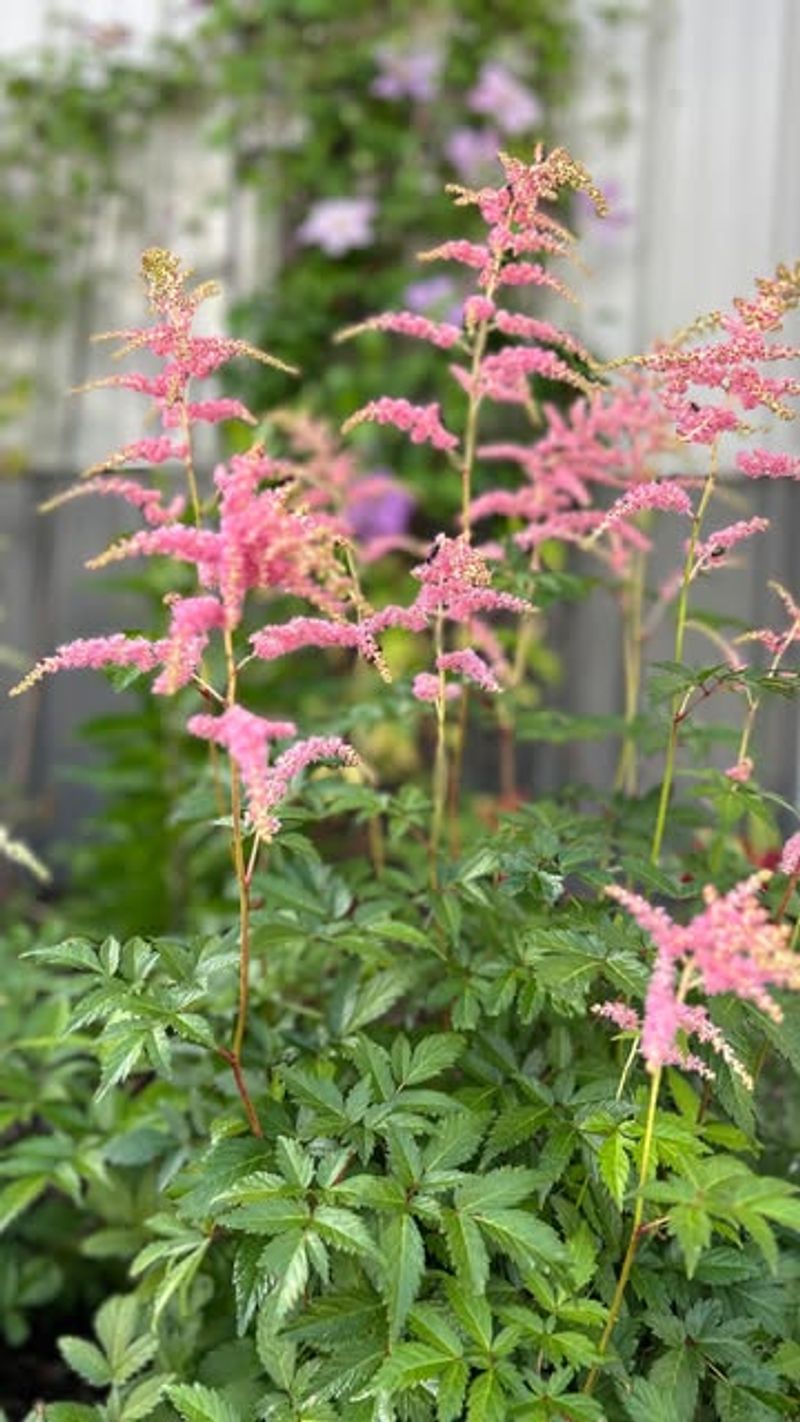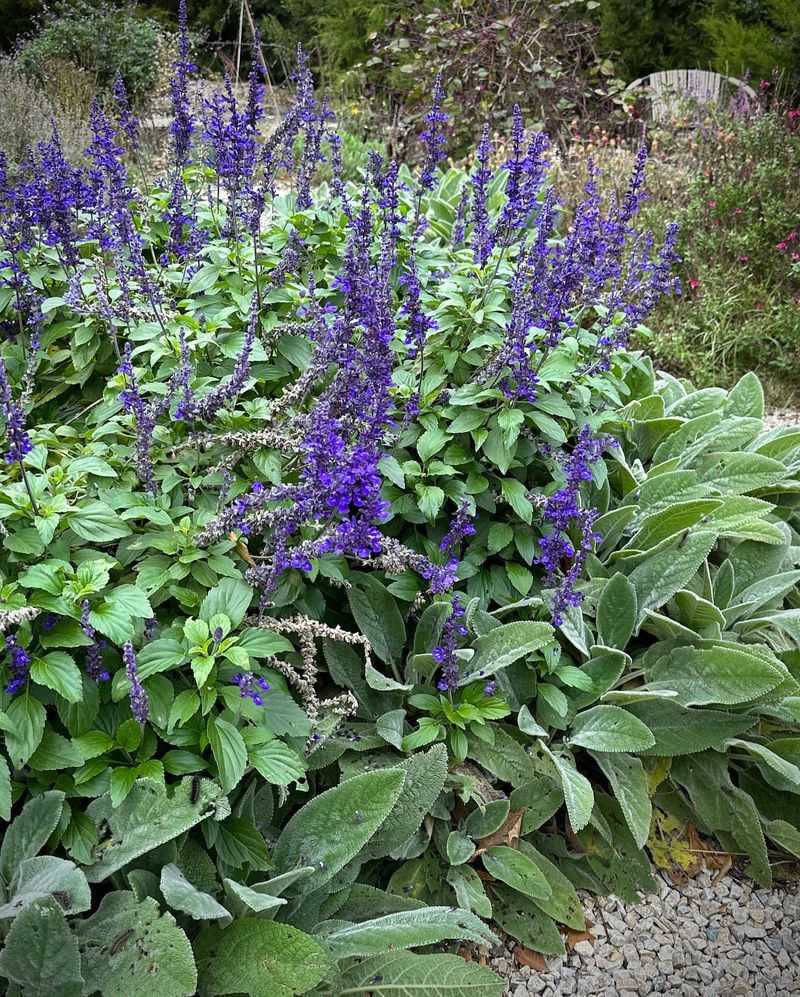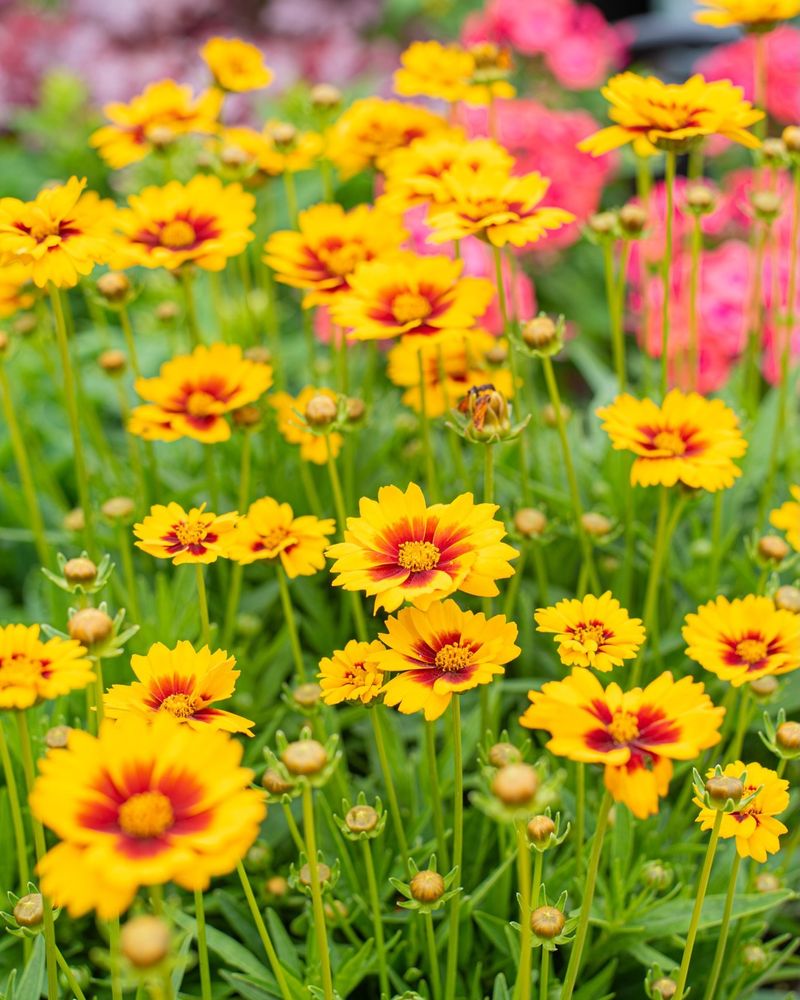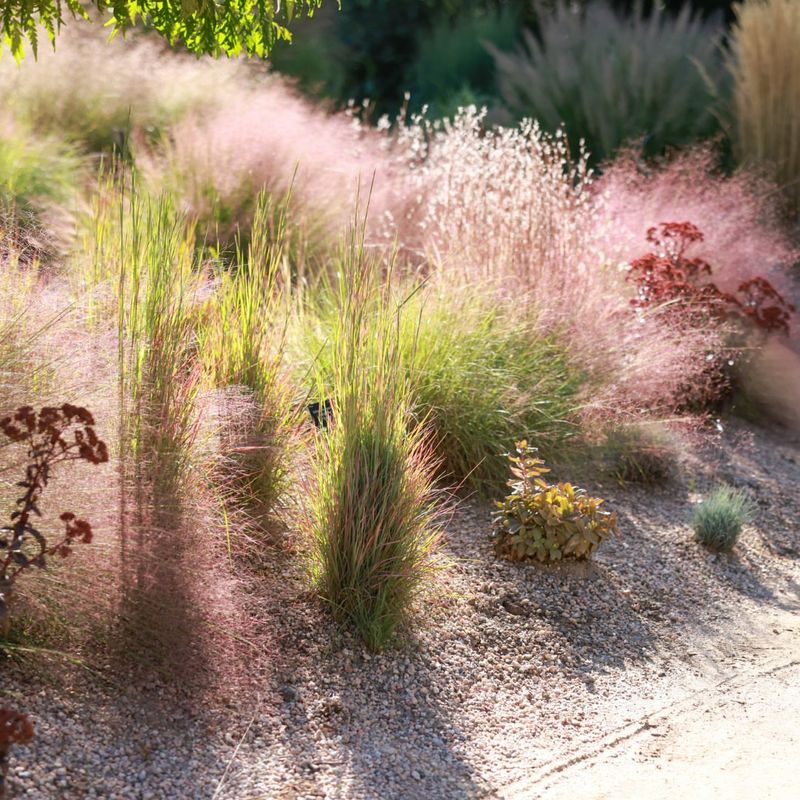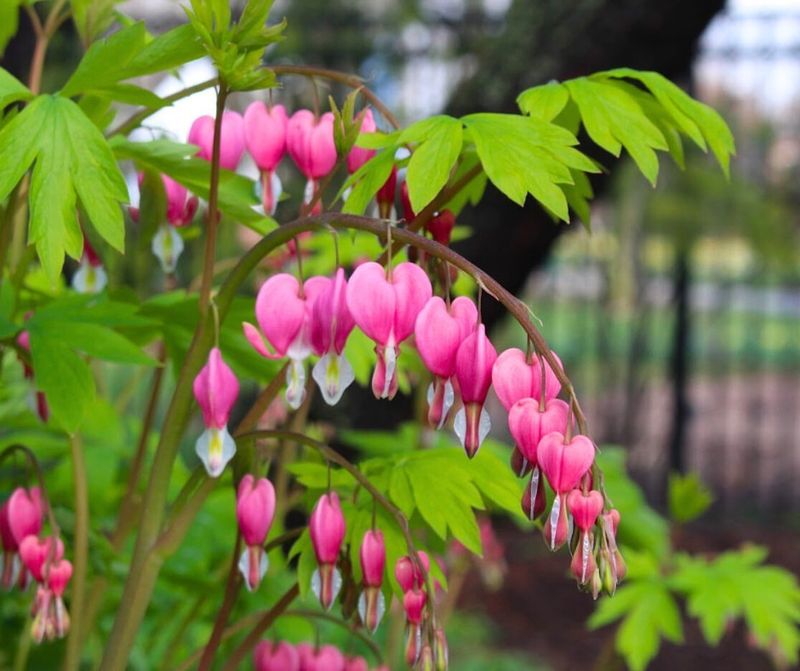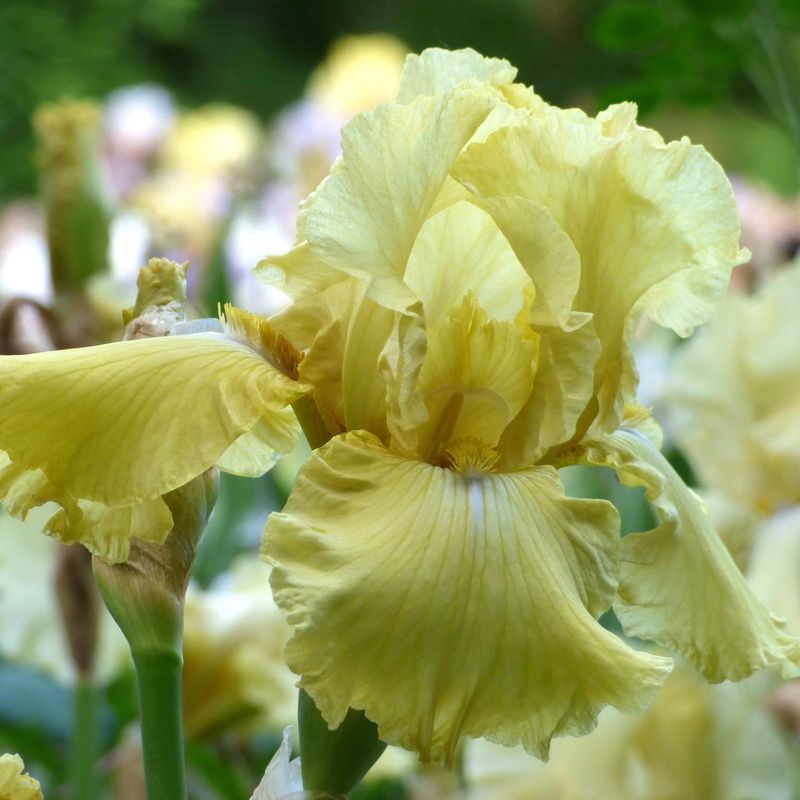If you’re looking for plants that basically take care of themselves, perennials are where it’s at. I’ve filled my garden with these low-maintenance favorites, and they come back year after year without a fuss.
Even if you’re short on time or new to gardening, these 20 easy growers won’t let you down. I’ll also share a few simple tips I use to keep them happy and healthy without the extra work. It’s all about getting more beauty with less effort!
1. Lavender
These fragrant purple blooms need very little attention once established. Plant in well-draining soil and full sun for best results. Avoid overwatering, as lavender prefers dry conditions.
Prune lightly after flowering to maintain shape and promote bushier growth. A layer of gravel around the base helps prevent root rot by keeping excess moisture away from the crown. Most varieties are hardy to zone 5.
2. Sedum
Often called stonecrop, these succulents thrive in poor soil where other plants struggle. Their fleshy leaves store water, making them incredibly drought-resistant. Colors range from green to blue-gray to purple.
Plant in full sun and well-draining soil. Tall varieties may need staking to prevent flopping. Cut back in early spring rather than fall to provide winter interest and protection for beneficial insects.
3. Coneflower
Native to North America, coneflowers (Echinacea) attract butterflies and birds while requiring minimal care. Their daisy-like blooms with raised centers come in purple, white, yellow, and even green.
Give them full sun and average soil. Deadhead spent flowers to encourage more blooms, but leave some seedheads in fall for birds. Divide clumps every 3-4 years to maintain vigor and prevent overcrowding.
4. Daylily
True garden workhorses, daylilies tolerate almost any growing condition. Each flower lasts just one day, but plants produce buds for weeks. Available in countless colors except true blue.
Plant in full sun to light shade. Remove spent flower stalks to keep plants looking tidy. Divide clumps every 3-5 years when flowering decreases. Even neglected plants continue to bloom, making them perfect for busy gardeners.
5. Hostas
Perfect for shady spots, hostas offer beautiful foliage in shades from blue-green to chartreuse to variegated patterns. Their leaf textures range from smooth to puckered, adding dimension to dark corners.
Water during dry spells and apply mulch to retain moisture. Divide overgrown clumps in spring or fall. Their only significant pest is slugs, which can be managed with coffee grounds or diatomaceous earth sprinkled around plants.
6. Black-Eyed Susan
Cheerful golden flowers with dark centers bloom from midsummer through fall on these native plants. Rudbeckia thrives in average soil and tolerates both drought and humidity once established.
Provide full sun for best flowering. Deadhead regularly to extend the bloom season. Leave some seedheads for birds and winter interest. These short-lived perennials often self-seed, creating new plants without your effort.
7. Shasta Daisy
Classic white daisies with yellow centers bring a cheerful, cottage-garden feel to any landscape. These sturdy plants form tidy clumps that stay put rather than spreading aggressively throughout the garden.
Plant in full sun and well-draining soil. Deadhead regularly to encourage more blooms. Cut back stems after flowering finishes. Divide every 2-3 years in spring to maintain vigor and prevent centers from dying out.
8. Russian Sage
Airy spires of lavender-blue flowers appear above silvery foliage on this drought-tolerant beauty. Growing up to 4 feet tall, it adds vertical interest and movement to the garden from midsummer through fall.
Plant in full sun and well-draining soil. Cut back to about 6 inches in early spring. Avoid rich soil and excessive watering, which causes floppy growth. Pair with yellow or orange flowers for striking contrast.
9. Catmint
Gray-green aromatic foliage topped with lavender-blue flower spikes makes catmint a favorite for borders and rock gardens. Unlike its cousin catnip, most varieties won’t drive your cats crazy.
Grow in full sun and average to poor soil. Cut back by half after the first flush of bloom to encourage a second showing. Drought-tolerant once established, it rarely needs supplemental water. Newer varieties stay compact without flopping.
10. Coral Bells
Grown primarily for their colorful foliage, coral bells (Heuchera) come in shades from lime green to deep purple, often with silvery overlays. Small flower stalks appear in summer but the leaves provide year-round interest.
Plant in part shade and well-draining soil. Remove tattered leaves in spring. Divide every 3-4 years when centers begin to die out. Shallow roots benefit from mulch to prevent heaving during freeze-thaw cycles.
11. Yarrow
Flat-topped flower clusters in yellow, white, pink, or red sit atop ferny foliage on these tough prairie natives. Yarrow thrives in hot, dry conditions and poor soil where many plants struggle.
Give them full sun and excellent drainage. Deadhead to prevent excessive self-seeding. Cut back after flowering to encourage fresh foliage. Divide every 2-3 years to maintain vigor. Deer and rabbits typically avoid their aromatic foliage.
12. Peony
These long-lived plants produce spectacular blooms in late spring, often lasting for generations with minimal care. Their lush flowers in shades of pink, red, white, and yellow are prized for cutting.
Plant in full sun with eyes no deeper than 2 inches below soil level. Support with grow-through stakes to prevent heavy blooms from flopping. Remove spent flowers but leave foliage until fall. Once established, they rarely need division.
13. Bee Balm
Crown-like flowers in red, pink, or purple attract hummingbirds and butterflies to this native plant. The aromatic foliage smells like oregano and has traditional medicinal uses.
Provide full sun to light shade and average moisture. Choose mildew-resistant varieties for humid climates. Divide every 2-3 years to prevent centers from dying out. Cut back by a third in early summer for bushier plants.
14. Baptisia
False indigo develops into shrub-like clumps with blue, yellow, or white lupine-like flowers in late spring. Its blue-green foliage looks attractive all season, and mature plants form impressive 3-4 foot mounds.
Plant in full sun and well-draining soil. Avoid moving once established due to deep taproots. Cut back after flowering or leave decorative seedpods for winter interest. Young plants take 3-4 years to reach full flowering potential.
15. Astilbe
Feathery plumes in shades of pink, red, lavender, and white rise above fern-like foliage on these shade-loving perennials. They add texture and color to spots where sun-loving plants struggle.
Grow in part to full shade and consistently moist soil. Apply mulch to retain moisture. Cut back in fall or leave plumes for winter interest. Divide every 3-4 years when growth slows or centers begin to die out.
16. Salvia
Spikes of purple, blue, or pink flowers attract pollinators to these aromatic, deer-resistant plants. Perennial salvias come in many sizes, from compact border plants to towering 4-foot specimens.
Plant in full sun and well-draining soil. Cut back by a third after the first flush of bloom to encourage rebloom. Most varieties tolerate drought once established. Leave some stems standing in winter to protect the crown.
17. Coreopsis
Masses of daisy-like flowers in yellow, orange, pink, or bicolors cover these native plants from early summer until frost. Their fine-textured foliage creates an airy, informal look in borders and meadow gardens.
Grow in full sun and average, well-draining soil. Deadhead regularly to promote continuous blooming. Cut back by half midsummer if plants become leggy. Most varieties are short-lived but self-seed readily to maintain their presence.
18. Ornamental Grasses
From short blue fescue to towering miscanthus, ornamental grasses add movement, texture, and year-round interest to gardens. Their graceful forms look beautiful when backlit by morning or evening sun.
Most prefer full sun and average soil. Cut back deciduous types in late winter before new growth begins. Divide when centers die out or growth slows. Drought-tolerant once established, they rarely need supplemental watering.
19. Bleeding Heart
Heart-shaped flowers dangle from arching stems on these shade-loving spring bloomers. Traditional varieties sport pink and white flowers, while newer selections offer pure white or bright red options.
Plant in part to full shade and rich, moist soil. Don’t panic when foliage yellows and dies back in summer heat—this is normal dormancy. Avoid disturbing roots when plants are dormant. Apply mulch to keep roots cool and moist.
20. Iris
Bearded irises offer ruffled blooms in virtually every color of the rainbow atop sword-like foliage. Their distinctive form adds architectural interest even when not in flower.
Plant rhizomes with tops just barely covered by soil in full sun. Divide every 3-4 years when flowering decreases. Remove spent flower stalks but leave foliage until it yellows naturally. Avoid excessive moisture, which can cause rhizome rot.

